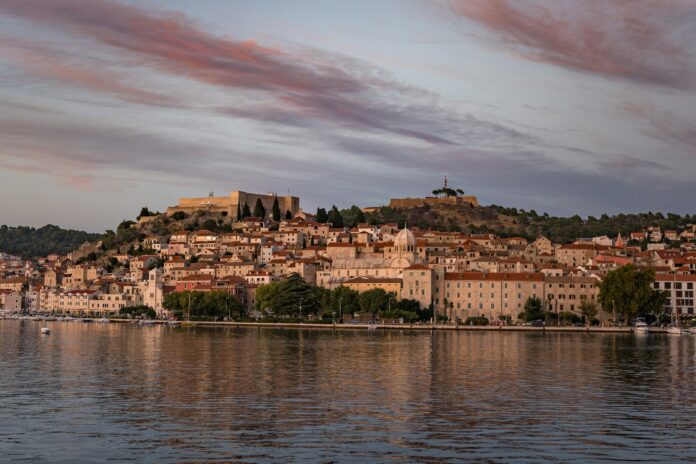Poised at the western edge of Europe, where the Atlantic crashes relentlessly against an ancient coastline, Connemara epitomises the Ireland of the imagination. Nestled in the heart of County Galway, it’s an absolute must-visit for any traveller seeking the authentic spirit of Ireland’s wild west.
Often described as the country’s final frontier, this rugged corner of the Emerald Isle has long captivated visitors with its dramatic landscapes and rich cultural heritage. Oscar Wilde and other celebrated writers and artists have long praised Connemara’s untamed grandeur, with its windswept bogs, crystalline lakes and majestic mountains creating a landscape that speaks to the soul of all who venture here.
Oscar Wilde, who had family connections to the area through his father’s summer house, described Connemara as possessing a “savage beauty.” His contemporary, Oliver St John Gogarty, expressed similar admiration by referring to the region as “half of heaven.”
The remoteness of this area means that it’s one of Ireland’s largest Gaeltacht (Irish speaking) areas and while today’s Connemara has embraced certain modern conveniences, it still maintains its untamed essence beneath the occasionally polished façade.
The breathtaking scenery, framed by windswept bogs, craggy mountains and pristine beaches, provides the perfect backdrop for a truly memorable Irish getaway. Just a short journey from vibrant Galway City, this magnificent natural wilderness represents the perfect place to spend a few leisurely days reconnecting with the elemental forces that have shaped this remarkable landscape. So, here are 10 IDEAL things to do and see in Connemara’s captivating landscapes.
The Best Time To Visit
The weather in this part of the world is notoriously fickle. The best time to visit Connemara is during the summer months of June through August, when temperatures are mild and daylight hours are longest. During this period, as local writer Tim Robinson beautifully put it, the weather is either “good, or interestingly bad“.
Connemara has a relatively short tourist season of just a few months in the summer, with many attractions, restaurants, and smaller accommodations operating at reduced hours or closing entirely during the winter. However, autumn and winter visits have their own charm, with dramatic stormy skies, cosy pubs with roaring fires, and the possibility of having beautiful locations almost entirely to yourself.
Regardless of when you visit, always pack layers and waterproof clothing. The Atlantic influence means weather can change rapidly, with sunshine and showers often alternating throughout the day. This changeable nature is part of Connemara’s character and contributes to its famous light that has inspired artists for generations.
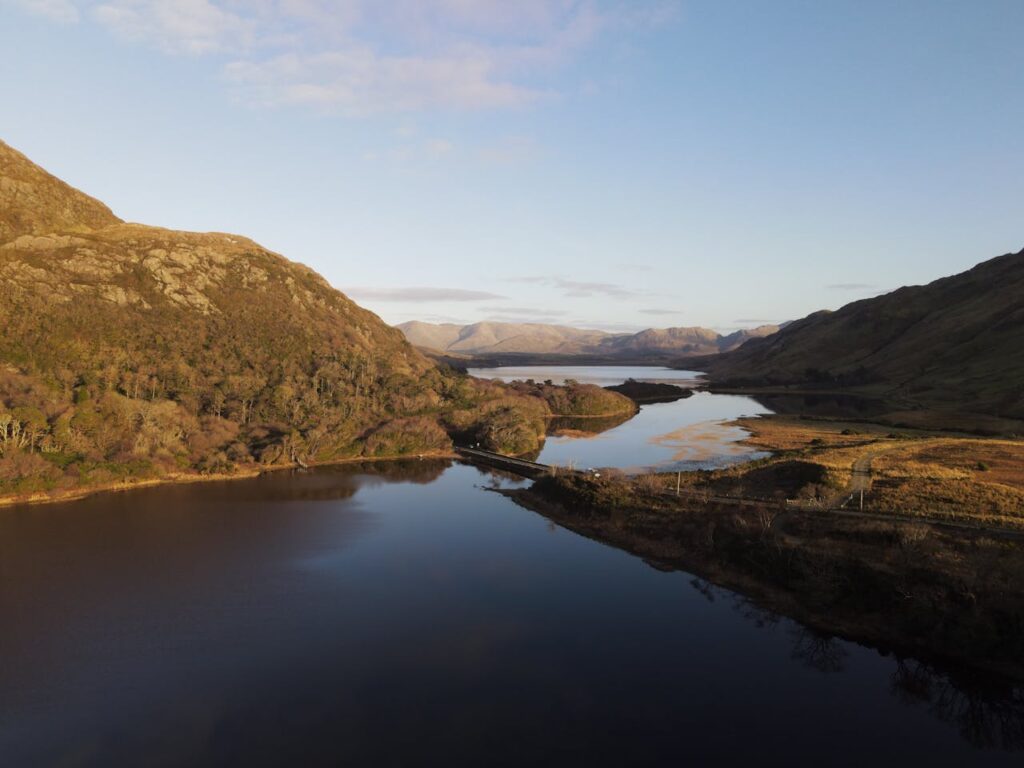
How To Get There & Where To Stay
The easiest way to reach Connemara is by car from Galway City, approximately a 90-minute drive. While public transport does exist, services can be limited, especially in more rural areas. Having your own transportation is highly recommended, allowing you to explore the region at your own pace and venture off the beaten path to discover hidden gems.
For accommodation, Clifden makes an excellent base. As the unofficial capital of Connemara, this charming market town with its distinctive curved main street offers a delightful blend of cafés, galleries, pubs featuring traditional music, and shops selling everything from Aran knits to local crafts. The town is centrally located for exploring the region’s highlights.
If you’re after the freedom and flexibility that self-catering accommodation provides, consider the picturesque fishing village of Roundstone, where whitewashed cottages frame a working harbour against a backdrop of the Twelve Bens mountains. Here you’ll find great options for accommodation in well-appointed townhouses and apartments, many with stunning harbour views.
For those seeking seclusion, when you’re looking to book your stay in Connemara, consider the island of Inishnee. Connected to the mainland by a bridge just outside Roundstone, it offers charming cottages with spectacular sea and mountain views. Other popular locations include the areas near Dog’s Bay and Gurteen beaches, where holiday homes offer easy access to two of Connemara’s most beautiful stretches of sand.
If luxury is what you’re after, Ballynahinch Castle provides an exceptional experience. Now one of Ireland’s finest hotels, it sits alongside a salmon-filled river within hundreds of acres of rugged landscape, offering exceptional comfort and old-world charm.
Other notable accommodations include Delphi Lodge, a restored historic retreat in a remote valley, and Currarevagh House, a characterful country house on the edge of Lough Corrib that has remained in the same family for generations. For those seeking sea views, Dolphin Beach House offers spectacular coastal panoramas along the scenic Sky Road from Clifden.
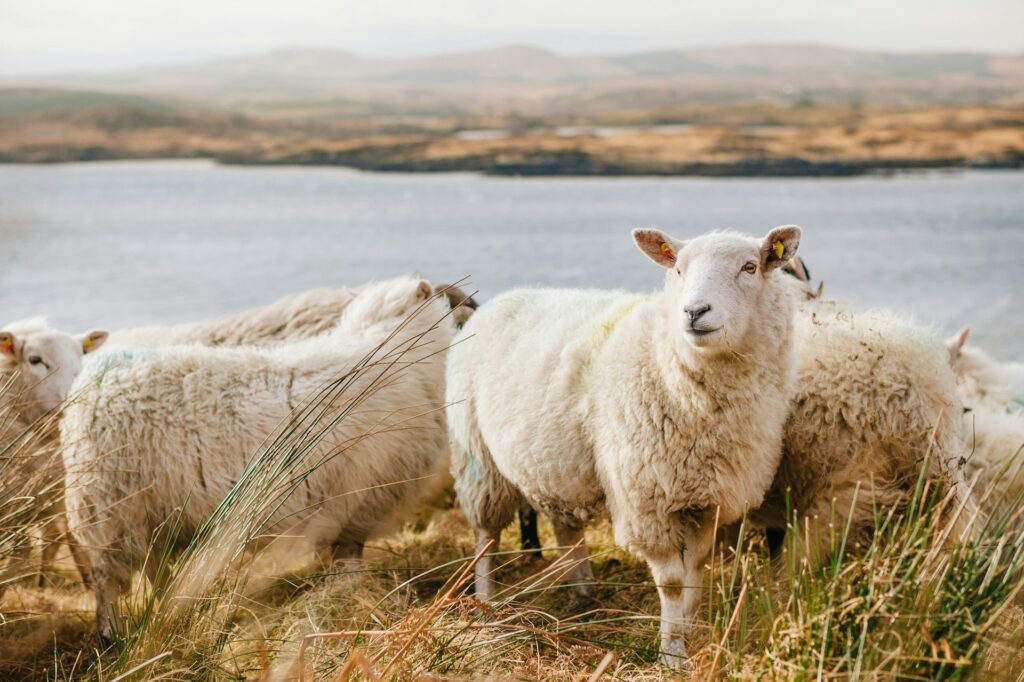

Explore Connemara National Park & Diamond Hill
No visit to Connemara would be complete without exploring its magnificent national park. Spanning approximately 2,000 hectares of mountains, bogs, heathlands and woodlands, Connemara National Park offers visitors a genuine taste of the region’s wild landscapes.
The park features several well-marked walking trails of varying difficulties, with the Diamond Hill walk being the most popular. Though moderately challenging, this trail rewards hikers with breathtaking panoramic views that stretch across mountains, coastline and distant islands. The 7km Diamond Hill Loop takes roughly 2-3 hours to complete, climbing to a height of 442 metres where the vista encompasses the Twelve Bens mountain range, Kylemore Abbey, and the Atlantic coastline.
The park’s informative visitor centre provides insights into the region’s natural and cultural history, with exhibits on local flora, fauna, and the traditional ways of life that have shaped Connemara over centuries. Look out for the native Connemara ponies grazing within the park boundaries – these sturdy, gentle creatures are an iconic symbol of the region.
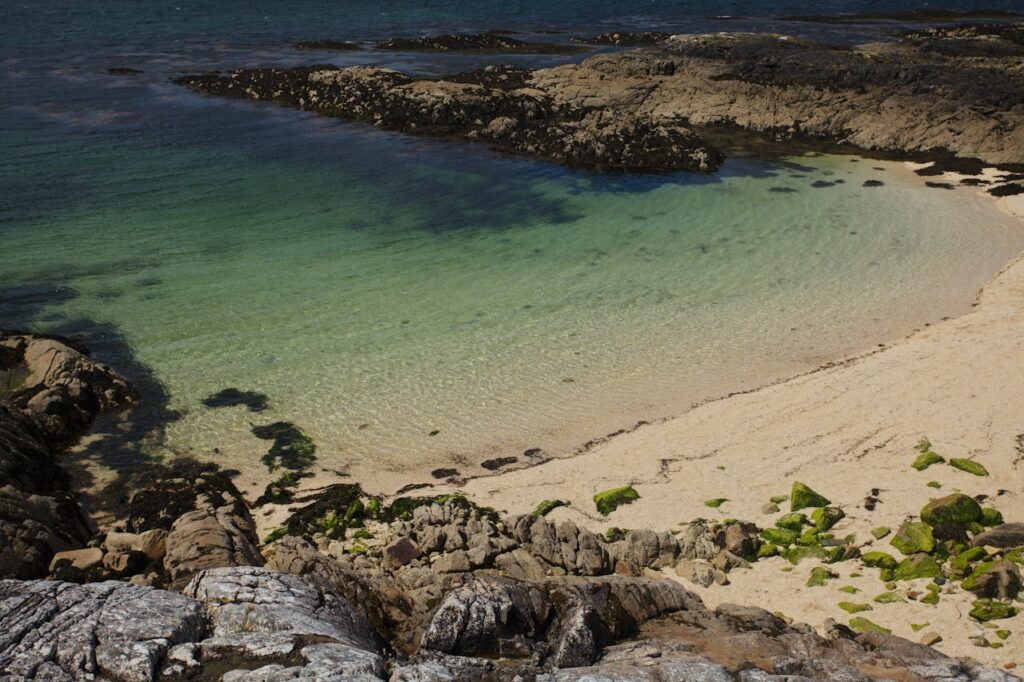
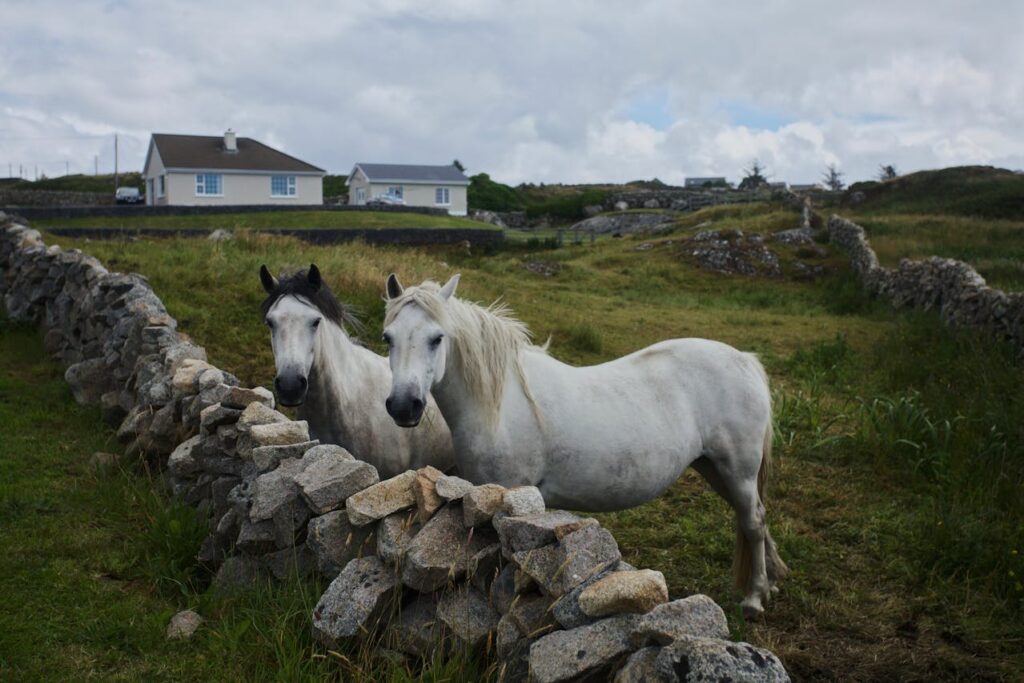
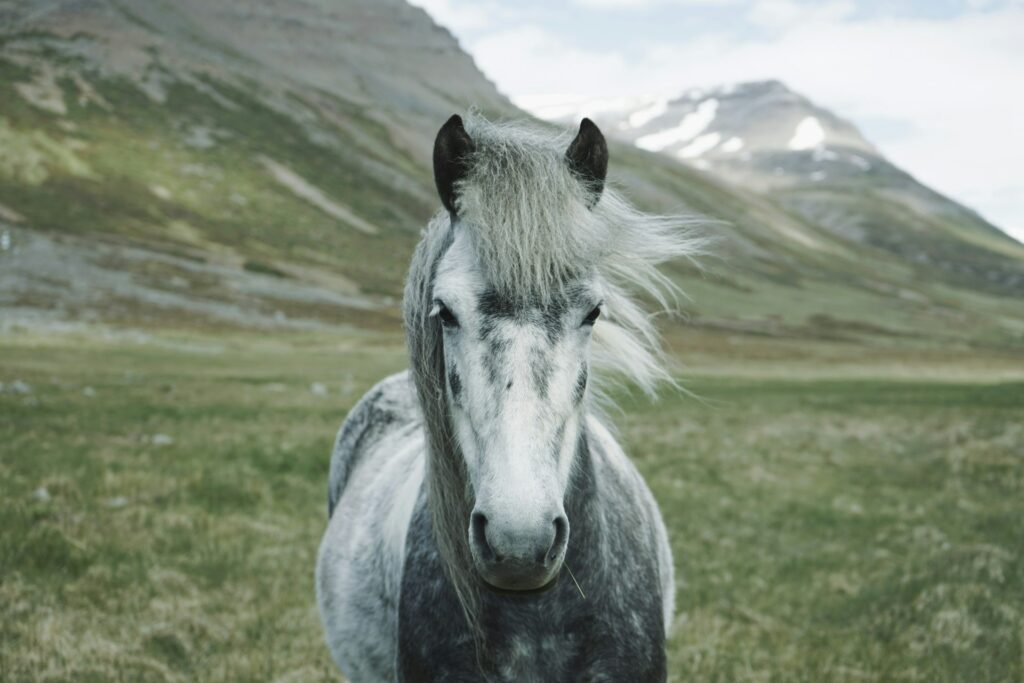
Visit Kylemore Abbey & Victorian Walled Garden
Perhaps Connemara’s most photographed landmark, Kylemore Abbey sits majestically on the shores of Kylemore Lough, surrounded by woodlands and backed by a craggy mountain peak. This former monastery and educational institution is now open to the public, offering visitors a glimpse into its fascinating history.
The abbey draws significant attention from tourists year-round with its photogenic lakeside setting. Built in the late 19th century as a romantic gift from Mitchell Henry to his wife Margaret, the neo-Gothic castle later became home to a community of Benedictine nuns who fled Belgium during World War I.
Today, visitors can explore several rooms within the abbey, the Gothic church, and the magnificent Victorian Walled Garden. Divided into formal flower gardens and productive kitchen gardens, the walled garden has been restored to its Victorian splendour and provides a delightful contrast to the wild landscapes that dominate the region.
After exploring the grounds, you can relax at the pleasant onsite café which serves delicious homemade treats. The abbey’s craft shop offers high-quality souvenirs, including products made by the Benedictine nuns.

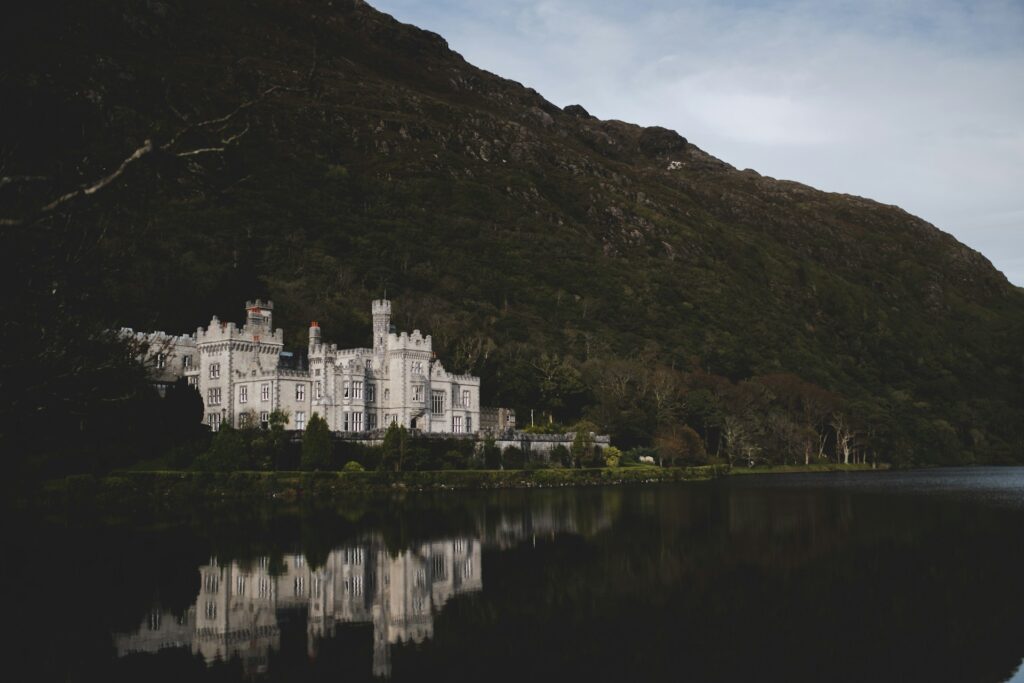
Drive The Sky Road
The Sky Road offers some of the most spectacular Atlantic Ocean views you’ll find anywhere in Ireland. This 16km circular route begins and ends in Clifden, taking drivers on a breathtaking journey along Connemara’s rugged coastline with numerous viewpoints where you can stop to soak in the scenery.
The road climbs to over 150 metres above sea level at its highest point, offering spectacular panoramic views of the Atlantic Ocean, scattered islands, and the rugged landscapes that define this corner of Ireland. The route is divided into the lower and upper roads — while both are scenic, the upper road provides the most dramatic vistas.
As you navigate the narrow, winding road, you’ll pass pristine beaches, ancient stone walls, grazing sheep, and possibly even catch sight of traditional turf cutting on the bogs. The light in Connemara changes constantly, creating an ever-shifting palette of colours across the landscape – perfect for photography enthusiasts.
For the most magical experience, time your drive for late afternoon when the setting sun bathes the landscape in golden light, transforming the sea into a glittering expanse. Do remember to drive cautiously, as the road is narrow in places, and the views can be distractingly beautiful.
Read: 9 places to experience the essence of Ireland during a long weekend away


Experience Killary Harbour: Ireland’s Only Fjord
Killary Harbour is Ireland’s only true fjord, stretching 16 kilometres inland and offering some of the most picturesque scenery in all of Connemara. This stunning inlet forms a natural boundary between Counties Galway and Mayo, with the majestic Mweelrea Mountains rising dramatically on its northern shore.
This remarkable natural formation was carved by glacial ice during the last Ice Age and now offers numerous ways to experience its beauty. Adventure seekers can participate in water activities such as kayaking and boat tours, with lucky visitors potentially spotting dolphins or seals in the pristine waters.
For a more relaxed experience, consider taking a cruise aboard one of the tour boats that regularly depart from the harbour. The 90-minute journeys provide informative commentary about the fjord’s formation, local history, and the mussel farming that takes place in these sheltered waters.
Hikers can enjoy the Killary Harbour Coastal Path, which follows the southern side of the fjord and traces the route of an old famine relief road built in the 1840s. The path offers spectacular views across the water to the Mweelrea Mountains and passes abandoned villages that tell the poignant story of Connemara’s past.
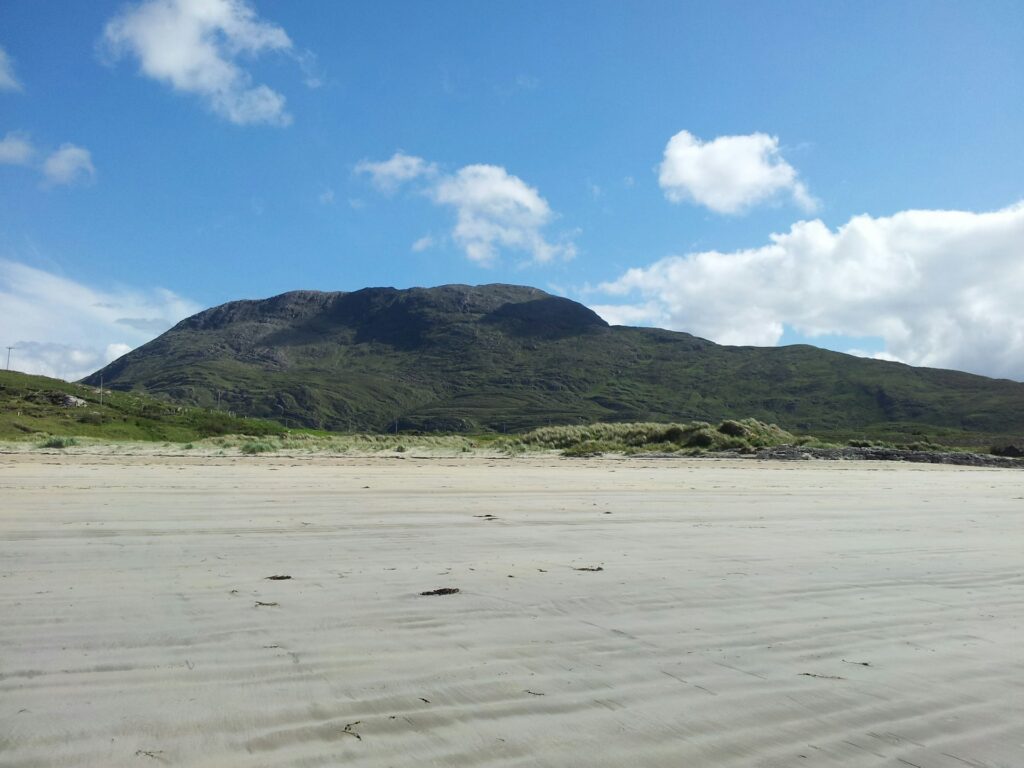
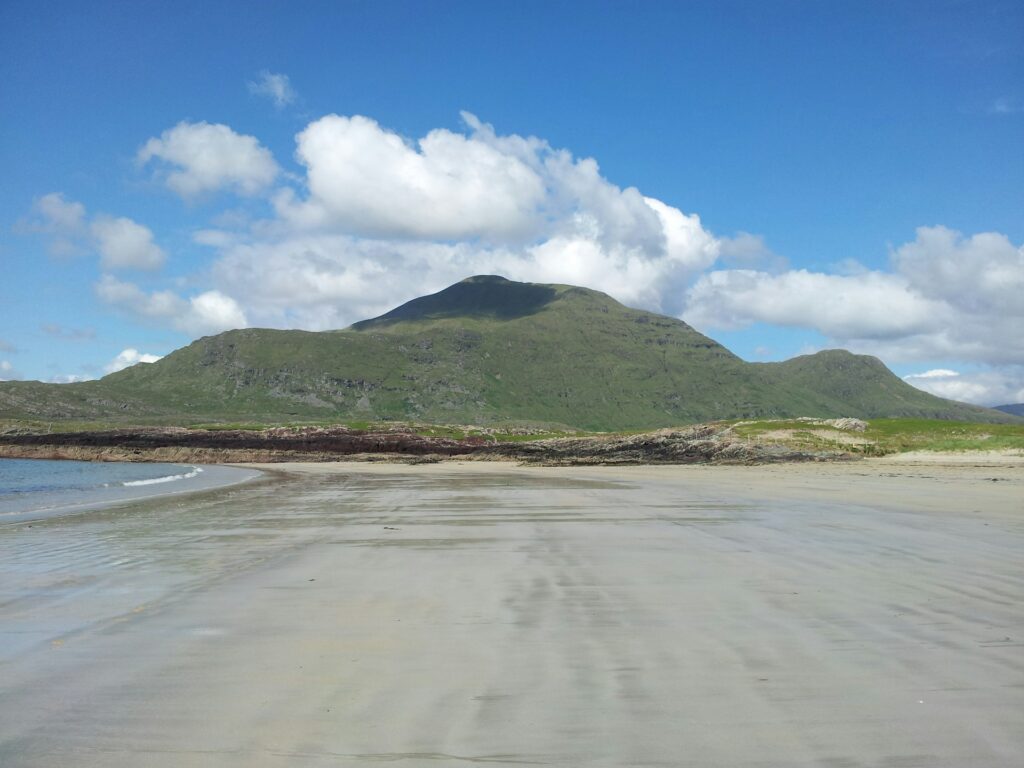
Discover The Pristine Beaches
Connemara boasts some of Ireland’s most stunning beaches, many of which remain blissfully uncrowded even during peak summer months. Glassilaun Beach features pristine white sands and remarkably clear waters, often referred to as a hidden gem among Connemara’s coastal treasures. Its crystal-clear waters and dramatic mountain backdrop make it a paradise for photographers and wild swimmers alike.
Near Roundstone, the magnificent beaches of Dog’s Bay and Gurteen sit back-to-back, creating a spectacular coastal landscape. Dog’s Bay features a distinctive horseshoe shape and dazzling white sand that’s actually composed of crushed seashells rather than typical quartz sand. This gives the water a Caribbean-like turquoise hue on sunny days, creating a startling contrast with the rugged Connemara landscape.
For those seeking more remote experiences, seek out Mannin (near Ballyconneely), Rossadillisk (just beyond Cleggan) and the White Strand on the Renvyle peninsula. The solitude of these beaches is remarkable—you might find yourself sharing the entire stretch of sand with just a handful of fellow visitors and perhaps a dog or two.
While the beaches are undeniably beautiful, do note that even in summer, taking a dip in the frigid Atlantic requires considerable fortitude – only the brave should attempt swimming without a wetsuit!
Explore The Enchanting Islands
The waters off Connemara’s coast are dotted with islands that offer fascinating glimpses into traditional Irish life and unspoilt natural environments. Inishbofin stands as a verdant paradise of green pastureland, dramatic cliffs, pristine beaches, grazing sheep and abundant seabirds. Keen observers might even spot minke whales from the ferry during the crossing. While it’s a popular summer day trip, the island is large enough that visitors can easily escape the crowds by exploring on foot or by bicycle.
The island is rich in history, with ruins including a 13th-century church and a Cromwellian fort. Local legends and folklore abound, adding an air of mystery to this tranquil outpost. To truly experience island life, consider staying overnight at one of the small hotels or guesthouses to experience the authentic rhythm of island life and perhaps catch traditional music sessions in the local pubs.
Another fascinating destination is Omey Island, a remarkable low-lying expanse of granite, grass and sand with a scattering of cottages. What makes this island particularly special is that it’s connected to the mainland by a half-mile stretch of flat beach that completely disappears at high tide. This creates a unique situation where timing your visit is crucial—arrive at the wrong moment and you might find yourself temporarily marooned! Always check tide times carefully before visiting.
While in the area, consider exploring Inishark and other smaller islands for more off-the-beaten-path adventures that showcase the diversity of Connemara’s coastal landscapes.
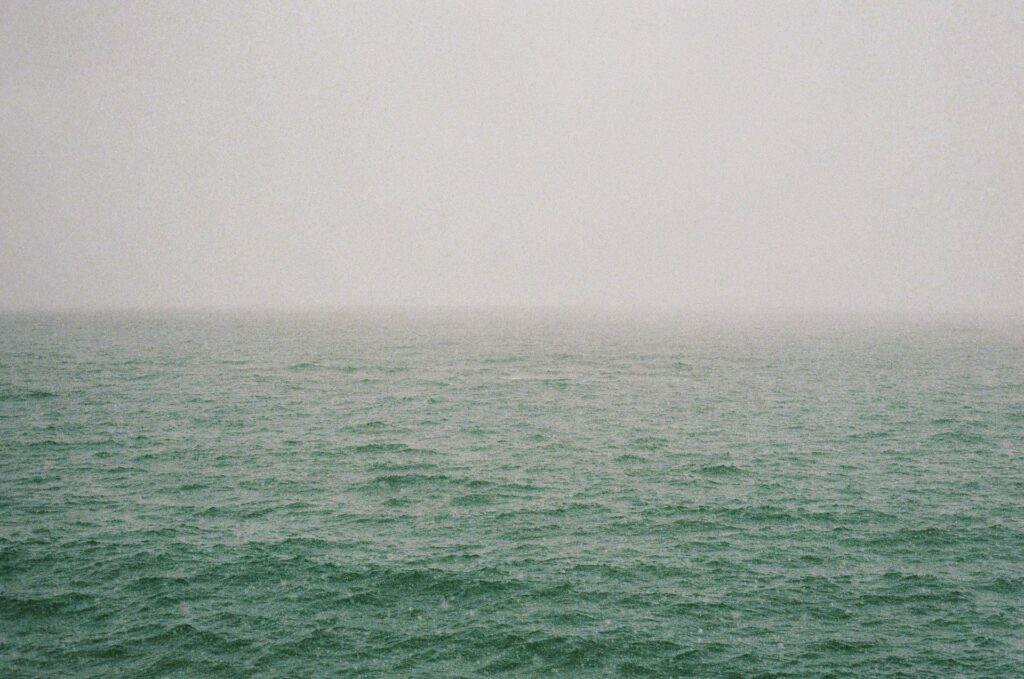
Immerse Yourself In Traditional Music & Pub Culture
No visit to Connemara would be complete without experiencing the region’s vibrant traditional music scene. The pubs of Connemara aren’t just places to enjoy a pint; they’re cultural institutions where locals and visitors gather to share stories, music, and craic (fun).
One standout venue is O’Dowd’s in Roundstone, a historic family establishment that has been serving locals and visitors since the early 1900s. The pub is particularly known for its exceptional seafood chowder that draws food enthusiasts from across the region.
This pub offers an exceptional experience with its prime location overlooking Roundstone’s picturesque harbour and the magnificent Twelve Bens mountains in the distance. Inside, you’ll find warm wooden interiors and cosy corners where visitors can enjoy a perfect pint of Guinness or locally brewed craft ale alongside freshly caught seafood.
Other notable establishments include Powers Thatch in Oughterard, a traditional bar with an authentic thatched roof situated in the heart of the village that exudes old-world charm, and Keane’s Bar in Maam Bridge, where spectacular natural surroundings complement traditional Irish hospitality.
Many pubs host traditional music sessions several nights a week, particularly during summer months. These informal gatherings of musicians playing fiddles, tin whistles, bodhráns (Irish drums), and other traditional instruments provide an authentic glimpse into Ireland’s rich musical heritage. Join locals in tapping your feet to lively jigs and reels or shedding a tear to haunting ballads that speak of Ireland’s turbulent history.
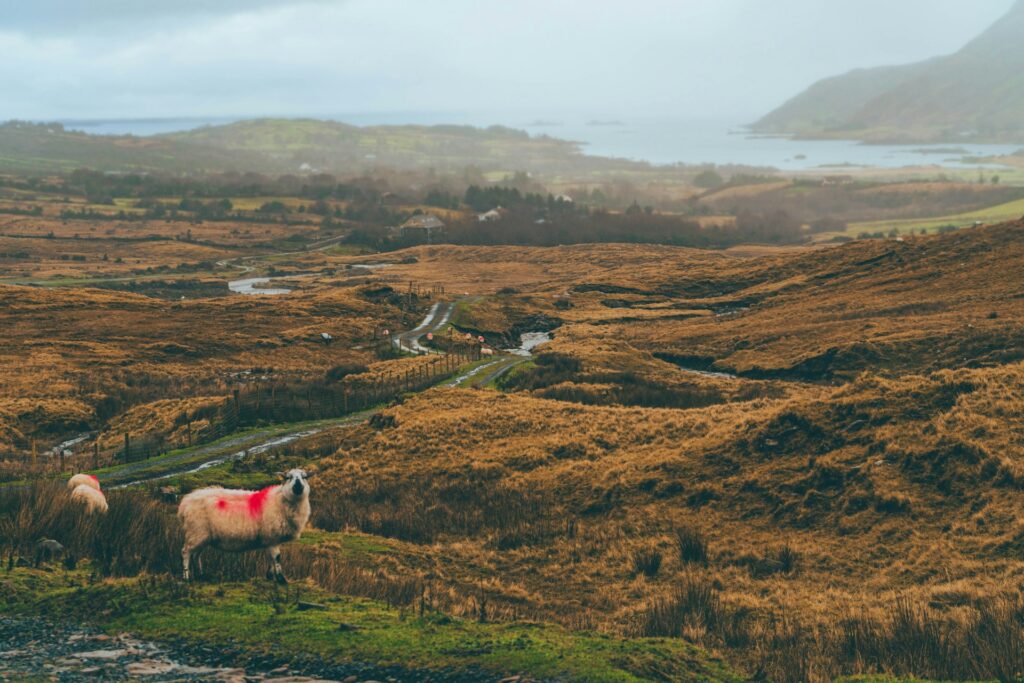
Sample Fresh Local Cuisine
Connemara’s cuisine is characterised by its simplicity and emphasis on fresh, high-quality ingredients sourced from both land and sea. The region’s culinary offerings showcase the bounty of the Atlantic Ocean and the fertile lands of western Ireland.
Seafood features prominently on menus throughout Connemara, with restaurants priding themselves on serving fish caught that very morning. Even the most modest establishments take care to inform diners about the provenance of their ingredients.
Clifden is home to quite a few notable eateries. Don’t miss Steam Cafe, a lovely spot in the Station Yard serves up an open sandwich of Cleggan crab on brown bread. It’s darn delicious. The Lamplight on Market Street is a gorgeous wine bar. Then there’s Oifig an Fish, a seafood restaurant located in the former post office. Open daily in July and August and promises local lobster and fish.
Due to the seasonality of the tourist season, food trucks are part and parcel of the dining scene in Connemara. Unfortunately, the most famous, Misunderstood Heron by Killary Fjord just announced its closure. However, other popular food shacks include Snappy Snappy on the N59 outside Letterfrack which specialises in chowder and crab rolls. Don’t miss Dooncastle Oysters at Streamstown Bay either where you can get oysters, lobster and calamari.
For other standout bites, head to Roundstone for the aforementioned O’Dowd’s Seafood Bar and Restaurant and Cleggan is worth a visit just for the Little Fish Café – the lobster rolls here are great.
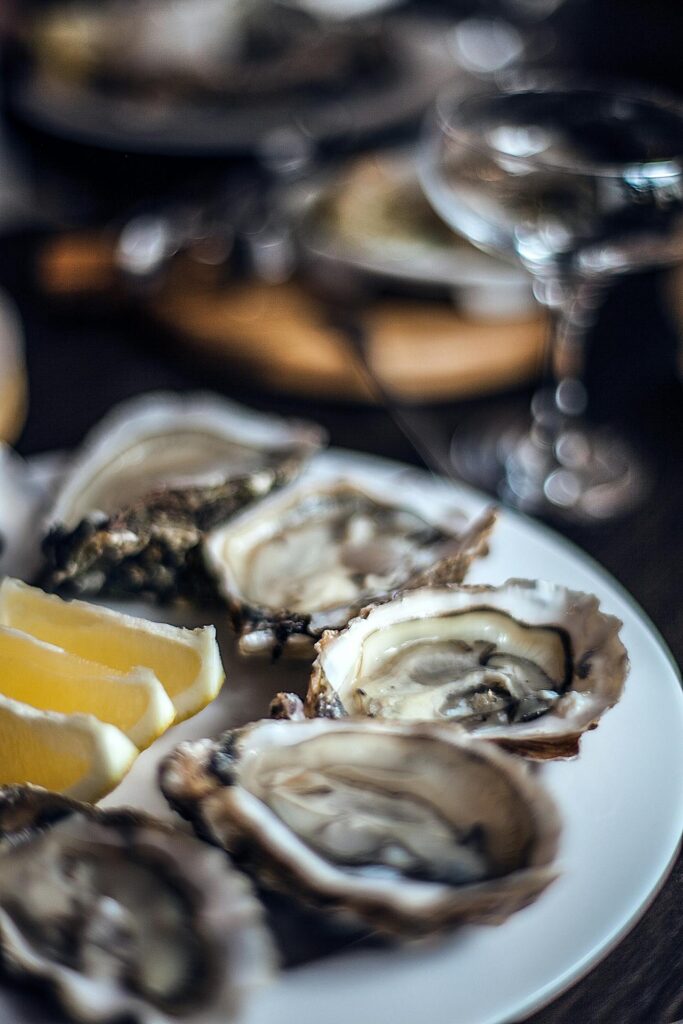

Embark On Outdoor Adventures
Connemara’s varied landscapes provide the perfect playground for outdoor enthusiasts of all levels. Adventurous visitors can enjoy scaling the rugged peaks of the Twelve Bens mountain range or cycling through quiet country lanes to discover breathtaking coastal vistas hidden from the main roads.
Wildlife enthusiasts will find plenty to delight in, from watching for porpoises and dolphins along the coastline to observing the diverse birdlife that flourishes in this relatively untouched environment.
For a truly quintessential Connemara experience, horse riding on native Connemara ponies should not be missed. These hardy, intelligent animals—with their distinctive grey coats and gentle temperaments—have been bred in the region for centuries and are perfectly adapted to navigate the rocky terrain.
The region offers numerous adventure activities including sea kayaking, wind and kite surfing, rock climbing, mountain biking, stand-up paddleboarding, deep-sea angling and scuba diving. For a truly authentic experience, visitors can even learn the traditional skill of cutting turf from the bog – a practice that has sustained generations of Connemara families through harsh winters.
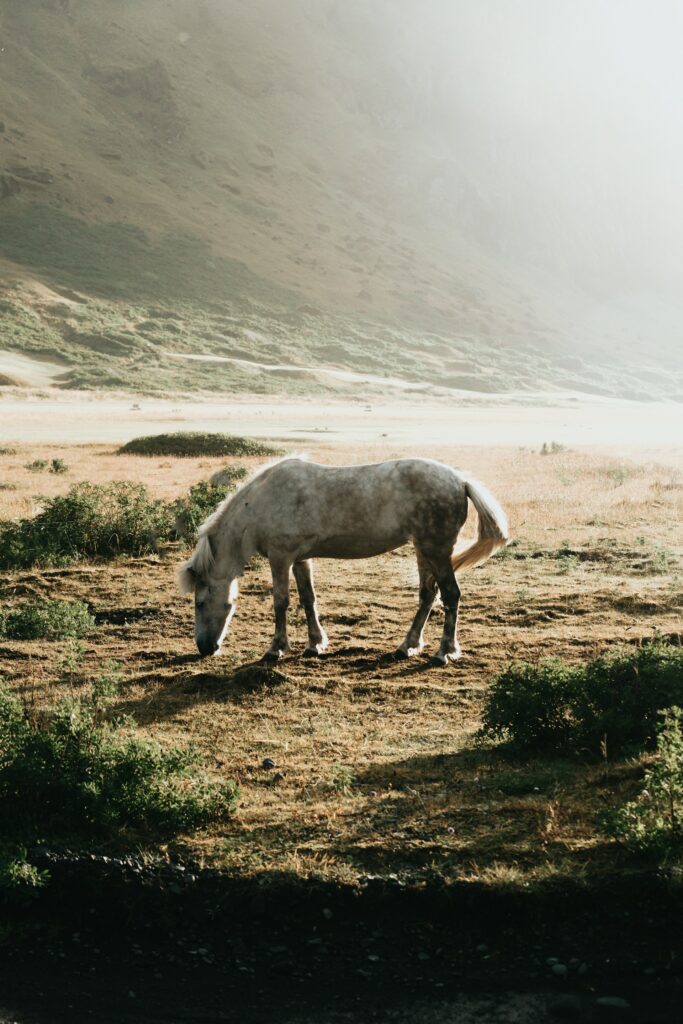
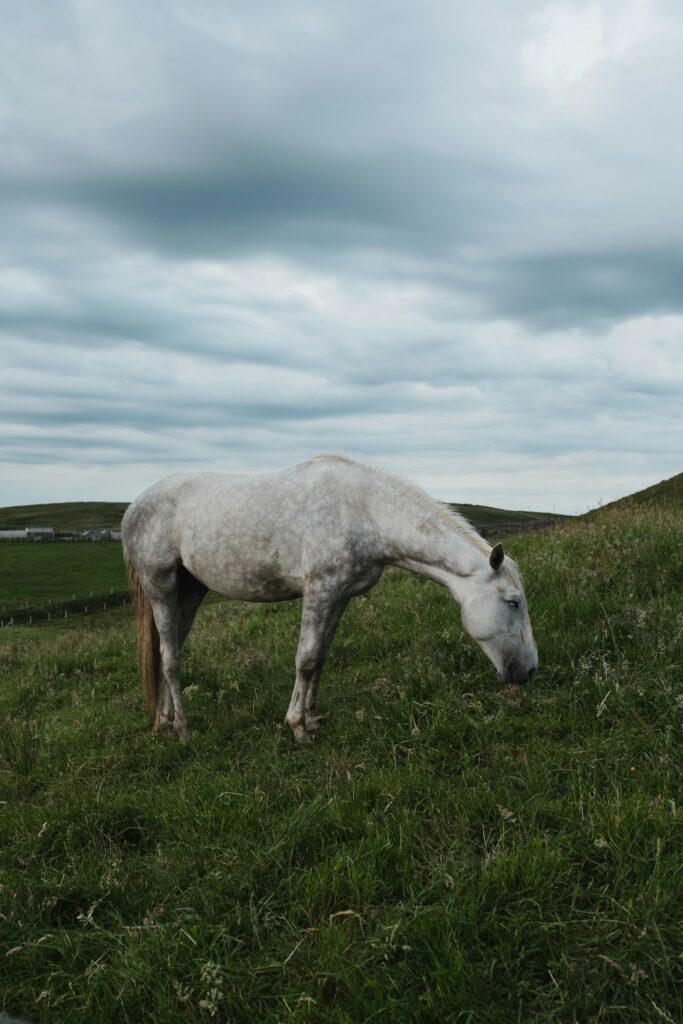

Fishing enthusiasts will find excellent opportunities in Connemara’s countless lakes, rivers, and coastal waters. The region is renowned for its trout and salmon fishing, with Lough Corrib being particularly famous among anglers worldwide. Local ghillies (fishing guides) can provide expert advice on the best spots and techniques.
Regardless of which activities you choose, Connemara’s changeable weather means it’s wise to be prepared with waterproof clothing and layers — conditions can shift rapidly from sunshine to showers and back again within the hour!
Follow The Wild Atlantic Way
At 2,500km, Ireland’s Wild Atlantic Way stands as one of the world’s most impressive coastal touring routes. This spectacular journey traces the western coastline of Ireland, including Connemara.
The Connemara section represents one of the route’s most dramatic segments, where the road frequently traces the immediate coastline, creating extraordinary driving experiences as Atlantic waves crash nearby. This stretch is often described as the “wild heart of Ireland,” where the raw beauty of the Atlantic meets the rugged terrain of the Twelve Bens and Maamturk Mountains.
Several iconic discovery points dot the Connemara section of the Wild Atlantic Way, including Derrigimlagh bog south of Clifden—a signature discovery point where history and natural wonder intertwine. Here, a monument commemorates where Alcock and Brown’s pioneering transatlantic flight landed in 1919. The bog is also home to the ruins of the first transatlantic wireless station, established by Guglielmo Marconi.
The Connemara Loop, a circular route within the Wild Atlantic Way, takes you through picturesque villages like Letterfrack, Leenane, and Maam Cross. This drive showcases the diversity of Connemara’s landscapes—from coastal panoramas to mountain passes, peaceful valleys, and mirror-like lakes. The route passes many of the region’s highlights mentioned earlier, including Kylemore Abbey, Connemara National Park, and Killary Harbour.
For a particularly memorable experience, combine the Wild Atlantic Way with the aforementioned Sky Road near Clifden.
The Bottom Line
Connemara offers a genuine glimpse into the Ireland of imagination and legend. With its dramatic landscapes, rich cultural heritage, and warm hospitality, it provides an authentic experience that will linger in your memory long after you’ve returned home.




